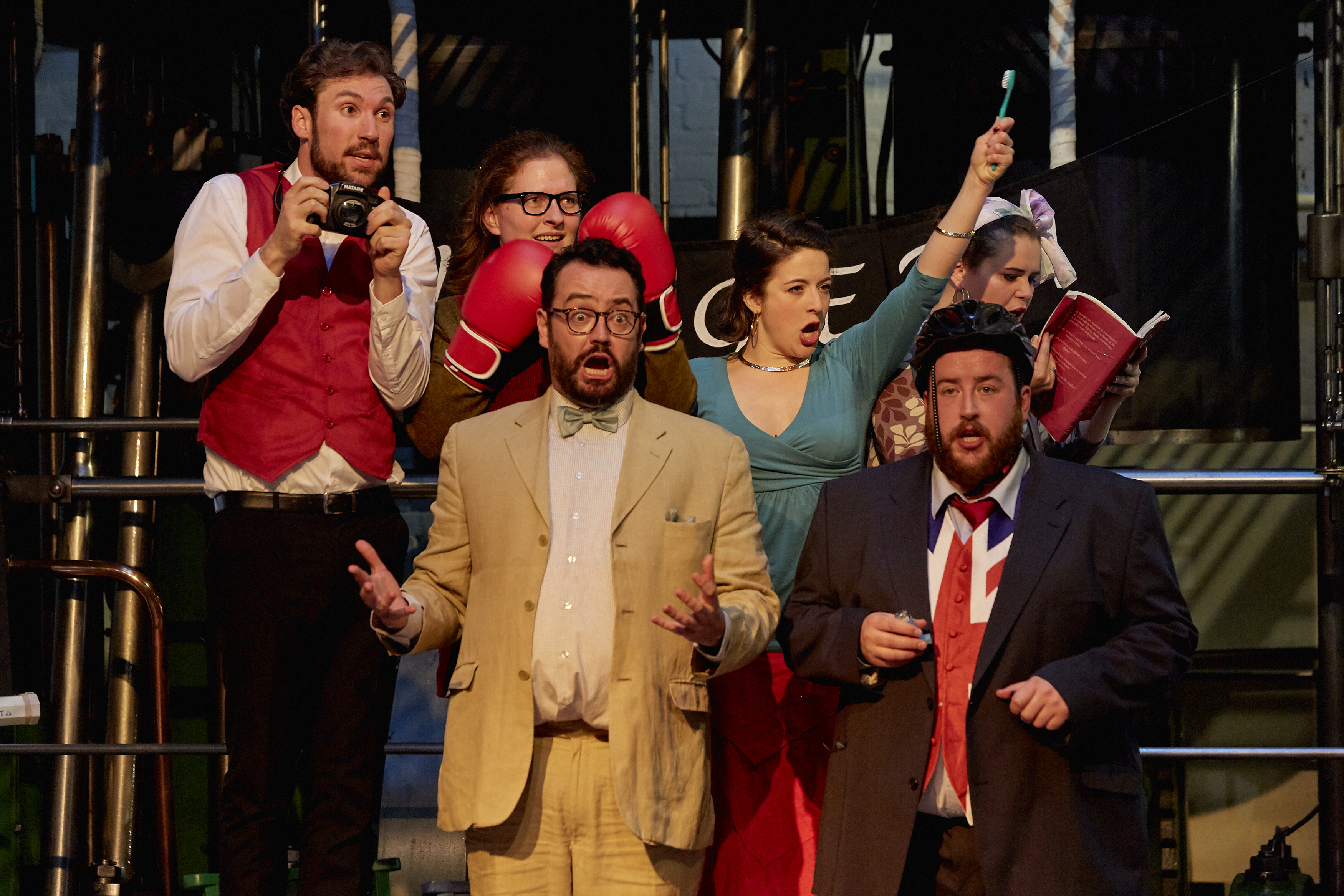AMY MACPHERSON reviews Pop-up Opera’s Il Matrimonio Segreto.
The Geffrye Museum is a grade 1 listed eighteenth century building, a fitting venue for a revival of Domenico Cimarosa’s comic opera. The performance space itself however is a modern, brightly lit room hidden away from the exhibitions as a twenty-first century bubble in this otherwise antique setting. The professed aim of the Pop-Up Opera theatre company is to perform classic operas in unusual and intimate spaces. The performance space in this instance is certainly intimate, and, though not a wholly unusual stage for an off-west-end production, poses a jarring contrast against such traditional venues as the Royal Opera House. Pop-Up takes opera out of its natural grandiose habitat and draws it into the modern, and does so with considerable success.
Often with classical opera – or indeed with theatre in general – the audience is transported out of their present into a world of the past. In the Geffrye it is the reverse: the audience member crosses the threshold from the eighteenth century back into our own era, an action that parallels the opera’s modernisation by director Max Hoehn, as the characters, costume and props have all been transposed into the twenty-first century. The company splendidly breathes life and energy into an opera that is more than two hundred years old. There is nothing stuffy or pretentious about this production – it is fresh, funny and most importantly it feels new, something that is crucial to a successful revival, especially of a relatively obscure piece with which most modern audiences will not be familiar.

The company achieves this sense of freshness and contemporaneity in a number of ways. One adaption was in the modernisation of the story. The original narrative features the Italian gentlemen Geronimo (Joseph Kennedy) attempting to marry his daughter Elisetta (Emily Blanch) to the buffoonish aristocrat Count Robinson (Tom Asher); in this production, Geronimo is a wealthy Italian businessman with aristocratic ambitions and the Count is a bombastic, Union Jack-wearing English toff, whose bicycle helmet seems permanently fused to his head, as though it is an essential component of his anatomical make-up. Indeed, Asher seems to be channelling his inner Boris Johnson as he lumbers around the stage, making unwanted advances towards Elisetta’s more attractive sister Carolina and drinking something that suspiciously resembles prosecco. Reinforcing this sense of twenty-first century upper-class London-living are the costumes: they are contemporary and understated, yet the bright colours of their shirts, skirts and suits subtly convey the sense of opulence and decadence that the stereotypical cosmopolitan may exude.
The excellent choreography and effective use of props by characters further enhances the cartoonishness and farcical nature of the show. A highlight of the performance is the fight scene between Elisetta and Carolina, in which the sopranos attack each other with boxing gloves and formidable high-notes. The vocals of the main cast were incredibly strong, especially those of the main female leads, and yet even during the most challenging solo arias, duets and harmonies, there was some immense physicality to the action, as characters run, struggle against one another, amorously throw themselves upon each other, and cast melodramatic overtures of passion to the objects of their unrequited love.

Emily Blanch’s performance is particularly strong as she uses this kind of extravagant body language to convey the awkwardness of her character. Her conniving aunt Fidalma is interpreted by Vivien Conacher as the family member who probably reads Fifty Shades of Grey and inappropriately boasts about past sexual conquests at the dinner table. In one scene, she instructs her sexually unknowing niece in the necessity of fulfilling certain urges while wielding a copy of Alex Comfort’s manual ‘The Joy of Sex’. Blanch’s facial expressions as she examines the obscene illustrations are priceless.
The opera is sung in the original Italian with English captions projected on the wall – but these are captions like no other. Forget about the literal translations that appear at the English National Opera; someone has evidently had a lot of fun writing Pop-up’s translation, almost entirely paraphrasing the Italian in modern slang, euphemisms and contemporary references. Accompanying these tongue-in-cheek captions are successive projected images of London, a country manor, members of the royal family, merchandise, cake and cats – yes, cats. Though the opera is Italian, the production is quintessentially English. The jokes are evidently levelled at an English audience that can laugh at itself – though opera-goers from any country can still find many of them funny. Above all, the effect of the colloquial tone of these captions is bathetic. The show is a comedy infused with farcical melodrama: it is not necessary for an opera to be grandiloquent in language or in style.
Il Matrimonio Segreto was written by Cimarosa to entertain the audience of his era, and Pop-Up Opera attempts to do the same for our era in their rendition. The performance was a lot of fun and a pleasure to watch. The opera is enormously fresh, contemporary and accessible. The low budget in no way detracts from the quality of the performance – indeed, the minimalism is in some ways one of its strengths. Opera can sometimes seem as though it is the preserve of the higher echelons in society, with all its perceived pomp and circumstance, the fancy costumes and ostentatious set design. Shows such as this challenge such a perception, and seek not so much to impress, but to entertain.
Pop-Up Opera’s Il Matrimonio Segreto is on tour until July 30th. Find more info here.
Featured image courtesy of Richard Lakos.





